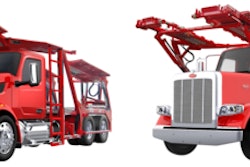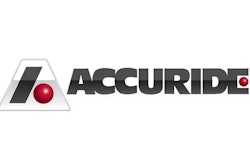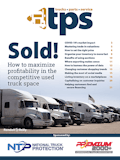
Employee theft is an ugly, yet unavoidable risk, when running a business.
“My dad used to call it the silent partner,” says Dave Willis, president at CRW Parts. “Everybody has to deal with it at some point.”
According to a survey by the National Retail Federation, employee theft cost employers more than $1,550 per incident in 2020. In the aftermarket and dealer channels, where many products fetch high prices and employee autonomy is paramount to business effectiveness, employee theft looms around every corner.
Yet while avoiding the threat may be impossible, businesses aren’t powerless to reducing the risk.
Understanding one’s vulnerabilities and creating oversight programs to monitor those weaknesses will reduce the likelihood a business is affected by internal theft.
CRW Parts, which operates seven auto and heavy truck parts locations across the Mid-Atlantic, has occasionally dealt with employee theft throughout its more than 150-year history. Willis is a realist to the phenomenon. He works hard to prevent it but also understands eradicating it is unlikely.
[RELATED: Knowing your customers key to keeping sales on the table]
“It’s just one of those things,” Willis says. “You’ll never know exactly what makes a person to do it … All you can do is hopefully stop them from trying.”
Unfortunately, the truck parts business is an industry vulnerable to employee theft. Many employees function inside and outside the business with little daily managerial oversight and have access to product, customer information and revenue streams.
A counterperson can sell a product for a rate that exceeds a company’s price structure to a cash-paying customer and pocket the difference. A delivery driver can pick up 200 cores from a customer and sell 20 off the books before returning to a store with a receival note for 180 units.
Combating employee theft requires identifying these potential soft spots in an operation and building fail safes to strengthen them. At the counter, this could be eliminating cash payment or requiring managerial approval. In the field, this might require a customer to sign a pickup note before a driver departs their facility.
Increasing visibility and oversight into employee actions was the first thing Harman Heavy Vehicle Specialists did when it uncovered two employees stealing from the company, says Vice President Ian Johnston.
“We realized we were too trusting of our employees,” he says. “We had given them access to what they needed to help customers and they took advantage of that.”
Harman responded quickly to reduce points of vulnerability, Johnston says.
“For us it’s been about accountability,” he says. “We’ve created multiple signoffs for a lot of things that, in the past, didn’t work that way … When you can put that second set of eyes on something, you’re far less likely to have a problem.”
[RELATED: Is it time to consider cycle counts to manage your inventory?]
Products themselves matter, too. A low-cost, low-margin product won’t net a thieving employee a quick payday but could enable them to skim profits undetected for a long time. Conversely, an employee stealing high-priced items from a warehouse likely won’t go unnoticed for long but will make money fast if they can move the units.
“There certainly are lines that lend themselves to people stealing,” says Willis, who mentions catalytic converters as a prime example due to the elements used in their production.
“With converters, you can get a couple hundred bucks for them,” he says. “That’s why inventory counts, cycle counts and the like are so important. If you can know as soon as you have a problem, you can stop [theft] and find it where it happened.”
Accounting theft is another high-risk area for parts operations. The U.S Chamber of Commerce advises businesses to use teams and checks-and-balances practices in accounting departments to reduce the opportunity for employee theft. This decentralization reduces the potential of a single associate altering financial records to embezzle funds while also, ideally, improving the accuracy of a company’s information.
Johnston says a staging system has proved valuable for Harman HVS in this area. Within the system, a manager is alerted each time an invoice clears a stage and all invoices must move monthly until they are concluded.
It is also important to note accounting theft can take many forms, and be committed by many employees. A salesperson can goose an order; an accounts payable representative can fudge an invoice. Theft risks are neutralized through documentation and oversight.
“We’ve found 99% [of employees] are never going to take advantage of you, but the more checks and balances you have, the better off you are,” Johnston says.
Adds Willis, “If you have procedures in place, you can check people’s work. One person documents something and someone else confirms it.”
Theft can materialize in overlooked areas as well.
Employees taking home office supplies might not seem like a big deal compared to embezzlement, but that doesn’t excuse the action. Driving a company vehicle to run errands could lead to increased misuse if not promptly addressed. Theft becomes increasingly harder to deter if guard rails and preventive measures start to disappear.
“Especially in today’s world where everyone is running really tight with people,” says Willis. “You can’t let procedures start slipping just because you’re busy.”
Finally, there’s the matter of dealing with theft when its uncovered. An employer should never accuse an employee of theft without proof of the offense. But evidence should be acted upon — either through an employee’s suspension, dismissal or, if deemed necessary, legal action.
“When you prosecute them, it shows you’re serious,” Willis says. “That alone is a deterrent. People realize they won’t be able to get away it.”












